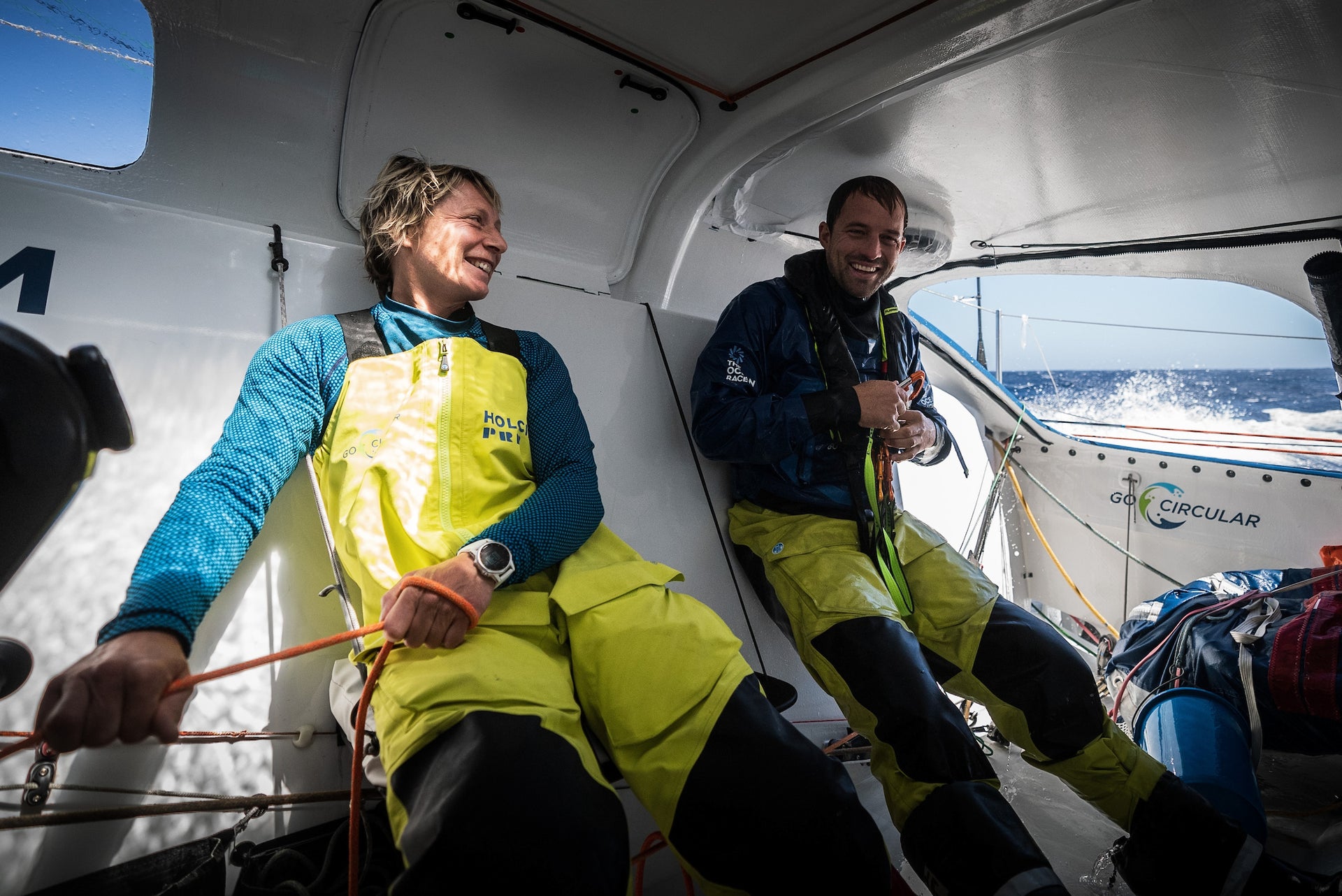WATCH SYSTEMS & CREW MANAGEMENT
Clear Strategies Eliminate Missed Opportunities
For the majority of boats racing offshore distance, the crew size will be between 8-16. To get the best out of everyone while racing the boat hard around the clock, the skipper or sailing master needs a clear view of each crew member’s skill sets: their strengths and weaknesses, and where they will work best within the team. If possible, a good balance of skill sets should be taken into consideration when building the crew.
Most boats will have a navigator who will remain outside the watch system, in order to manage their own time and be available at critical stages of the race: radio scheds, weather updates, or critical tactical decision time slots. Often a skipper or tactician may also stay outside the watch system, ensuring the correct decisions will be made even when the navigator is getting some critical rest.

For the majority of boats racing offshore distance, the crew size will be between 8-16. To get the best out of everyone while racing the boat hard around the clock, the skipper or sailing master needs a clear view of each crew member’s skill sets: their strengths and weaknesses, and where they will work best within the team. If possible, a good balance of skill sets should be taken into consideration when building the crew.
Most boats will have a navigator who will remain outside the watch system, in order to manage their own time and be available at critical stages of the race: radio scheds, weather updates, or critical tactical decision time slots. Often a skipper or tactician may also stay outside the watch system, ensuring the correct decisions will be made even when the navigator is getting some critical rest.

It is important to always have a clear strategy for the team on deck to follow, so that rest periods by the navigator do not lead to missed opportunities or mistakes.
The two watch leaders are usually the most experienced sailors on the boat. They are responsible for keeping the crew safe and the boat going as fast as possible during their watch, while also following the strategy set out by the navigator.

Each watch should include at least one of the following specialty skill sets:
- Bow
- Pit
- Trimmers
- Drivers
Teams will use different watch systems depending on how many bunks are available relative to the size of the crew. In an ideal world, the watch system would always be four hours on, four hours off (rotating every two hours). This gives plenty of rest and also many opportunities where there are enough hands on deck for a manoeuver. Realistically, though, this is only achievable on a boat with a small crew relative to the number of bunks.

The more common watch system is to split the crew into three watches of 4 hours on, 2 hours off. With this system, it is important for each crewmember to get straight to sleep and be completely OFF for your two hours. Even so, this system is not sustainable for more than three nights of racing.
For the best and safest race, it’s important for the skipper or sailing master to carefully consider the skills of each crew member before dividing into watches. Make sure everyone knows their job and the intended plan ahead of time. That way everyone can focus on racing.



























